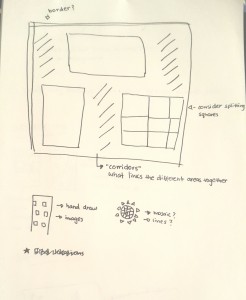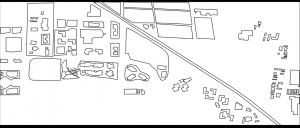
For my self-portrait, I decided to map my travel routine during high school in Bangalore, India. At this stage, my map is still very incomplete and needs to be reformatted.
At first I was confused about what to map. My initial idea (as shown by my sketches below) was to represent the three countries that I live in. However, it proved to be an overly ambitious task with no viable end goal. I decided, instead, to address a more simple and personal topic, while creating an aesthetic created around select memories and feelings associated with locations around Bangalore.
For the rest of my map, I will be constructing an aerial view of Bangalore city traced on images from Google maps:
Using colour and images from the internet of specific locations as my sign system (like the Bangalore Palace), I will navigate my movement around the city based on memories. Unfortunately, I do not have a concrete sign system or connection system to display.
The purpose of this map is to link emotion to place, and to create a visual representation of history. It is meant to create a cohesive connection between memory and place. The reading that perhaps influenced me the most is Rethinking the Power of Maps by Dennis Wood. Wood is able to reconfigure the map into being something more than an accurate geographical representation. Wood uses maps as a means to rethink space.
Visually, the artist the influenced me the most was Adolf Wolfli. Although I am unable to achieve a style similar to his, I appreciated the flatness of his maps that allowed for a great amount of detail to be put in. Wolfli’s layout creates a unique structure for his map.




